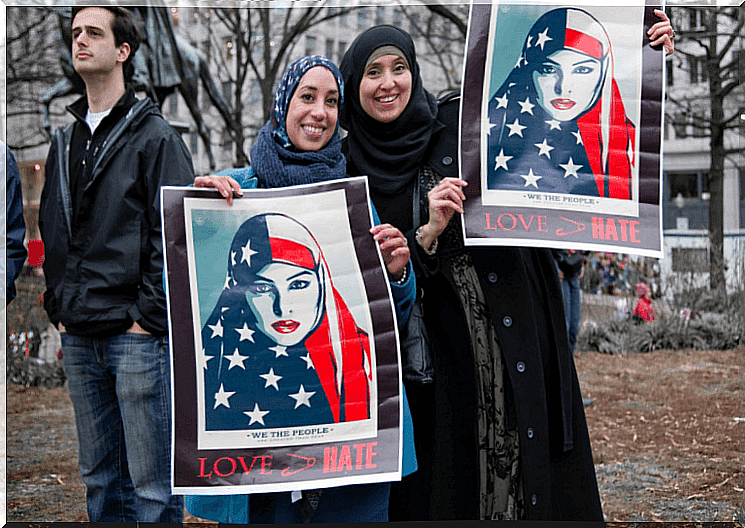Xenophobia: Meaning And How To Prevent It

Xenophobia sounds like a strong word. When used in the media, it usually refers to serious cases of relatively organized groups of people who have committed a crime against a person of a different ethnicity or nationality. However, xenophobia is much more than that.
We rarely talk about the situations that arise around the world every day. We rarely talk about the little thoughts and ideas that go through the minds of a lot of people. For example, is it xenophobia to think someone is a bad worker based on their country of origin? Let’s think about this.
What is Xenophobia?
Xenophobia is not just physical aggression towards someone because of their nationality. However, this is an extreme form of xenophobia that can clearly cause harm to the victim and society in general. Yet in reality xenophobia is much more than that.
The core of xenophobia is the social exclusion of a person based on his country of origin. This country usually differs from the country of origin of the aggressor. Exclusion can manifest itself in the form of direct behaviour, such as refusing to rent out a house to someone because of their nationality or skin colour.
But it also includes attitudes and beliefs that lead to stereotypes and generalizations of other people, such as the belief that one nationality is stingy, or that people of other nationalities are troublemakers. So there is no need for physical violence at all. Xenophobia can also manifest itself in thoughts and attitudes based on fear and rejection.

What risk factors lead to xenophobia?
If we live in such a progressive society, why is xenophobia so prevalent? The current state of uncertainty that we are constantly in is certainly a contributing factor. For example, some people have experienced a terrorist attack near them. Committed by someone of a different nationality. If there is a common factor linking these attacks, it can trigger xenophobia against that nationality.
These events have placed us in a constant state of vigilance. They make us anxious, constantly ready to fight or flee. When a person is in constant fear, he usually looks for someone to blame for this. And where does he usually look? With people who are different from himself.
When this happens, we tend to distance ourselves from those people. It doesn’t matter whether this means isolating them or isolating ourselves. The lack of direct contact with other cultures makes it impossible for us to challenge and therefore to break through the unfounded ideas about how dangerous we think they are. Therefore, distance is another important risk factor for the development of xenophobia.

How can we prevent xenophobia?
The first step to avoid xenophobia is to talk to people from other countries. So that we can immerse ourselves in other cultures. This will help us empathize with others and their culture. Thus we can see that we are not so different from each other at all. And that (of course) most of them are not potential terrorists trying to destroy our lives. It will also make us more sensitive to their stories and the challenges they face as a community.
We often don’t realize how bad it must be to leave your own country and put your whole life on the line. If things went well in their homeland, they probably wouldn’t have embarked on such an arduous journey, sacrificing the opportunity to be at home with their family for an adventure that feels dangerous rather than exciting. Whatever they do, both themselves and their loved ones are in danger. Staying where they come from is in most cases equal to death.
To avoid xenophobia, government agencies must implement truly effective assimilation programs. Programs where average citizens can really get to know people from other countries. And in which professionals participate who can mediate in possible conflicts.
Finally, it is important to spread truthful messages about people of different nationalities, without a hidden political agenda that sows fear and hatred.
Images courtesy of William Stitt, Eddy Lackmann, and Vlad Tchompalov.









